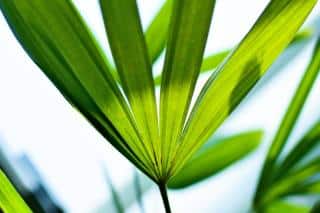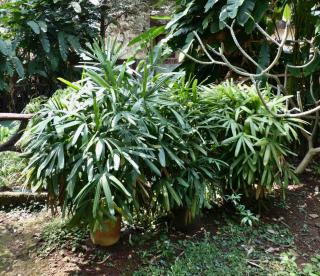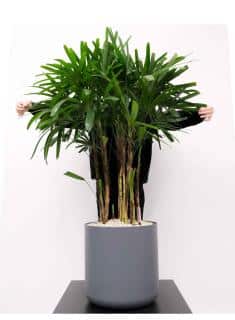

Whether you showcase it in your house, garden, or lean-in, Rhapis excelsa (or bamboo palm) will definitely find a place at home.
Key bamboo palm facts
Botanical name – Rhapis excelsa
Family – palm, Arecaceae
Type – Tree, palm
Height – 6 to 12 feet (2 to 4 meters)
Exposure – part sun
Soil – Humus-rich, well-drained
Hardiness – 60°F or 15 °C – Growth – Slow – Foliage – evergreen
Synonyms – Rhapis flabelliformis, Chamaerops excelsa
Common names – Rhapis, bamboo palm

Rhapis excelsa isn’t hardy at all, so it can only survive outdoors in mild-wintered areas. Anywhere else and you’ll have to grow it in pots, as a houseplant, and you’ll have to bring it indoors during the cold season. Outdoors, bamboo palm requires a particular setting:
Indoors, it’s pretty easy to satisfy all these conditions. However, the main enemy of Rhapis excelsa in this case is dry air.
Since bamboo palm fears the cold so much, the best season to plant it is in spring.
Growing outdoors, in the ground:
Once you’ve found the ideal spot, all you need to do is:
 Dig a planting trench that’s wide and rather deep (20 inches or 40 cm).
Dig a planting trench that’s wide and rather deep (20 inches or 40 cm).Rhapis excelsa in pots:

Another point that’s important: make sure the container or pot has drainage holes for excess water to drain away. Got the right container? Next steps:
There’s no need to prune or trim bamboo palm. Simply remove dead leaves when they’re all dried up, slicing them off at the trunk.
During the growing phase, from spring until the end of summer, be particularly diligent when watering: frequent with only little water is better than deep soakings. Reduce your watering in fall, and nearly stop watering during winter. When in pots, bring outdoor specimens inside long before the first frosts hit.

Because this plant is a slow grower, re-potting only needs take place more or less every 3 years. In the meantime, whether your bamboo palm is in the ground or in a pot, go ahead and topdress every year with fresh soil mix.
Since it’s difficult to get seeds through fruits, sowing isn’t the quickest propagation method. Better is to separate offshoots that pop up around the base of the plant, and transplant them into new pots.
Another option is to divide the clump once you’ve got several stems growing together. Do this at a time when you’d normally repot to minimize stress.
Though it is not vulnerable to disease, Rhapis excelsa nonetheless is the target of many pests such as mites (red spider mite in particular) and scale insects. This is even more the case if the palm is grown indoors.

To learn more, read: